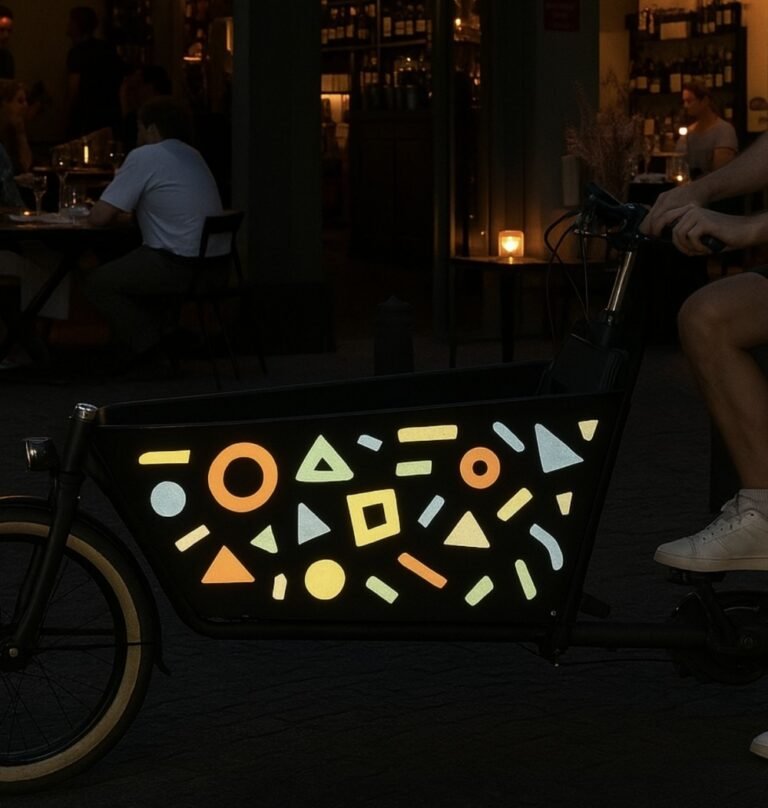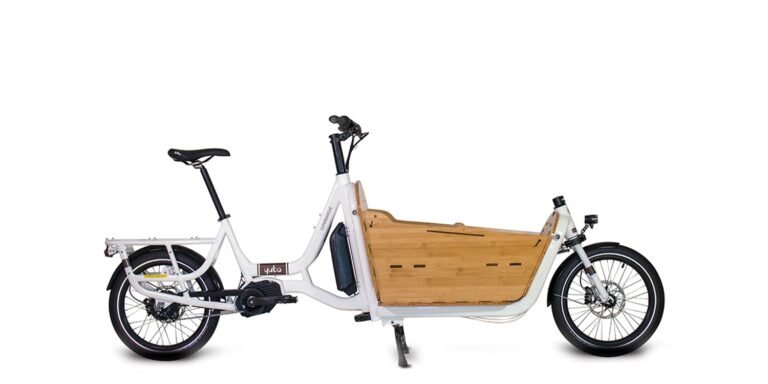Introduction
For decades, wooden cargo bike boxes have been an iconic part of family cycling culture, especially in Northern Europe. Dutch Vélos de route and Danish front-loading bikes often came with robust wooden boxes that could carry children, groceries, or even tools. They were valued for their natural look, artisanal feel, and sustainable image.
However, if you look at today’s cargo bike market, you’ll notice a significant change. Fewer and fewer manufacturers are offering wooden cargo bike box carriers. Instead, plastic, aluminum, and composite materials dominate catalogs and urban bike lanes.
So, why are wooden boxes losing their ground? And what are the materials taking over their place? Let’s break it down.
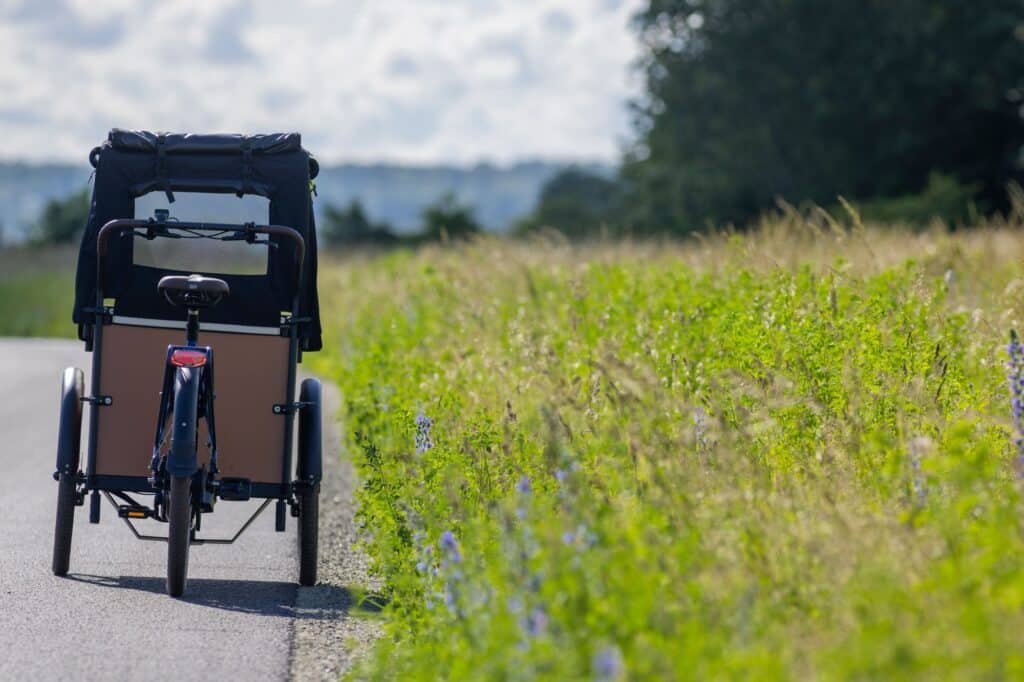
Quick Answer: Why Wooden Cargo Bike Boxes Are Declining
Wooden cargo bike boxes are becoming less common mainly because:
- Poids: Heavier than plastic or composite boxes, reducing range and maneuverability.
- Weather sensitivity: Wood cracks, swells, or rots when exposed to rain, UV light, and humidity.
- Entretien: Requires frequent varnishing, sealing, or replacement.
- Safety standards: Harder to meet modern EU crash and fire resistance regulations.
- Market trends: Riders and brands prefer lighter, more durable, low-maintenance alternatives.
The Historical Role of Wooden Cargo Bike Boxes
In the early 2000s, wooden boxes were the default choiceDes marques comme Bakfiets.nl ou Nihola promoted large wooden crates as family-friendly carriers. The appeal was obvious:
- Craftsmanship: Hand-built boxes created a premium aesthetic.
- Sustainability image: Natural, renewable material.
- Force: Thick plywood could handle children and cargo safely.
Wood also carried cultural symbolism. In cycling-friendly countries, a wooden box represented authentic family mobility. Parents pedaled through cities with children seated in varnished plywood carriers, signaling both tradition and eco-consciousness.
But as cargo bikes spread beyond their original niche, practical limitations of wood became harder to ignore.
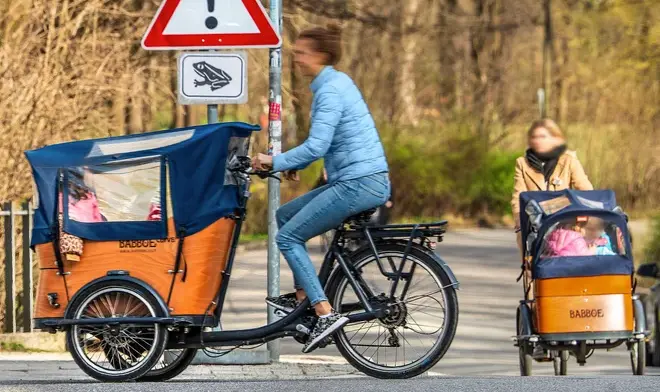
Key Reasons for the Decline
1. Weight & Efficiency
Weight is the single biggest drawback of wooden boxes. A large plywood box can add 5–10 kilograms compared to a plastic or composite alternative.
Pour vélos cargo électriques, this means:
- Reduced battery range.
- More strain on the motor.
- Heavier handling, especially uphill or when maneuvering.
In urban logistics, every kilogram matters. Delivery companies quickly realized that switching to plastic or aluminum carriers improved fleet efficiency.
2. Weather Resistance & Durability
Wood is naturally porous and reacts to the environment:
- Moisture: Rain and humidity cause swelling and warping.
- UV light: Direct sun exposure cracks and fades surfaces.
- Temperature changes: Freeze-thaw cycles weaken glue layers in plywood.
To prevent this, wooden cargo bike boxes need:
- Regular sealing with varnish or protective coating.
- Storage indoors during wet seasons.
For families and businesses, this level of maintenance became a burden. In comparison, HDPE plastic boxes can sit outdoors for years with minimal wear.
3. Safety & Regulations
As cargo bikes became mainstream, especially for carrying children, safety standards tightened.
- Crash resistance: Wood splinters under heavy impact, unlike plastic which flexes.
- Fire resistance: New EU regulations require materials to meet stricter fire retardancy.
- Edge safety: Wood edges are harder to round off compared to molded plastics.
Brands aiming for CE certification or ISO compliance found wood increasingly difficult to justify.
4. Cost & Maintenance
Although wood is relatively cheap as raw material, the life-cycle cost is higher:
- Needs regular repainting or sealing.
- Shorter lifespan under harsh use.
- More replacements over a bike’s lifetime.
Plastic or aluminum might cost more initially, but they last longer with almost zero maintenance.
5. Market Shift & Consumer Preference
Modern cargo bike users—both families and companies—value convenience and durability:
- Families: Want a box that is light, waterproof, and safe.
- Businesses: Care about uptime and cost savings.
- Manufacturers: Compete on efficiency, design flexibility, and compliance.
Wood, while charming, no longer fits the priorities of a mass market.
Alternatives to Wooden Cargo Bike Boxes
Today, most cargo bike boxes are made of plastic, metal, or composites. Each comes with distinct advantages:
| Matériel | Avantages | Inconvénients | Utilisation typique |
|---|---|---|---|
| Bois | Natural look, renewable, artisanal feel | Heavy, weather-sensitive, high maintenance | Traditional family bikes |
| Plastic (HDPE, ABS) | Lightweight, waterproof, cheap, easily molded | Can scratch, less “premium” | Family + logistics |
| Aluminium | Strong, durable, recyclable, industrial look | Heavy, more expensive | Delivery + heavy-duty |
| Composites (fiberglass, PP honeycomb, carbon fiber) | Very light and strong, modern aesthetic | Expensive, harder to repair | Premium commercial cargo bikes |
This comparison highlights why wood is fading: every other material provides greater durability and lighter weight.
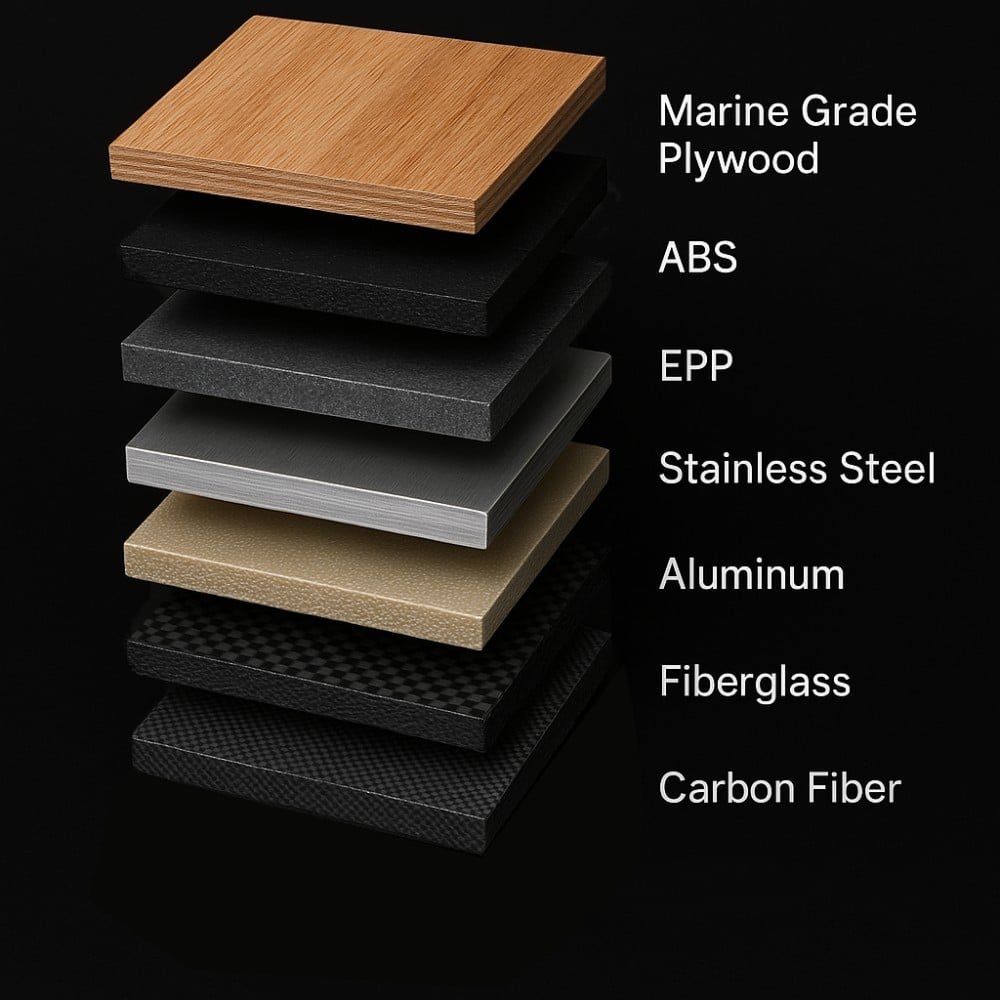
Do Wooden Cargo Bike Boxes Still Have a Place?
Despite the decline, wooden boxes are not entirely gone. They survive in niche markets:
- Retro and artisanal cargo bikes → appealing to riders who want a classic look.
- Small workshops → custom-built wooden boxes for specific customers.
- Eco-conscious branding → companies highlighting renewable material over efficiency.
However, these are small segments, unlikely to reverse the mainstream trend.
Future Trends in Cargo Bike Box Materials
Looking ahead, the cargo bike box market is moving towards:
- Lightweight composites: PP honeycomb, fiberglass, and even bio-based plastics.
- Modular systems: Interchangeable boxes for family or logistics use.
- Sustainability innovations: Fully recyclable plastics and carbon-neutral composites.
- Integration with design: Sleeker shapes, branding surfaces, aerodynamic improvements.
Wood, while traditional, is no longer a frontrunner in innovation.
FAQ
Q1: Are wooden cargo bike boxes sustainable?
Yes, wood is renewable, but frequent replacements and coatings reduce its eco-advantage. In lifecycle assessments, durable plastic or aluminum may score better for long-term sustainability.
Q2: How long does a wooden cargo bike box last?
With careful maintenance, around 3-5 ans. Plastic or composite boxes can last 7–10 years with little effort.
Q3: Can I still buy wooden cargo bike carriers?
Yes, some niche brands still offer them, especially in the Netherlands and Denmark. But mainstream manufacturers have shifted to plastic and composites.
Q4: Which material is best for modern cargo bike boxes?
For most users: plastic or composites (lightweight, durable, waterproof). For heavy-duty logistics: aluminum is preferred.
Q5: Why do some riders still prefer wood?
Mostly for aesthetics and tradition. Wooden boxes feel authentic and “classic,” but practical downsides limit their popularity.
Conclusion
Wooden cargo bike boxes played a foundational role in the history of family and commercial cycling. They symbolized tradition, craftsmanship, and sustainability.
Yet today, wood is declining because of its weight, weather sensitivity, safety limitations, and maintenance needs. The rise of plastics, aluminum, and composites reflects a broader market shift toward efficiency, durability, and regulatory compliance.
Wood may survive as a retro or artisanal option, but the future belongs to lightweight and durable alternatives.
👉 To understand all the different cargo bike box materials and types, check out our full Cargo Bike Box Materials & Types Customization Guide.





